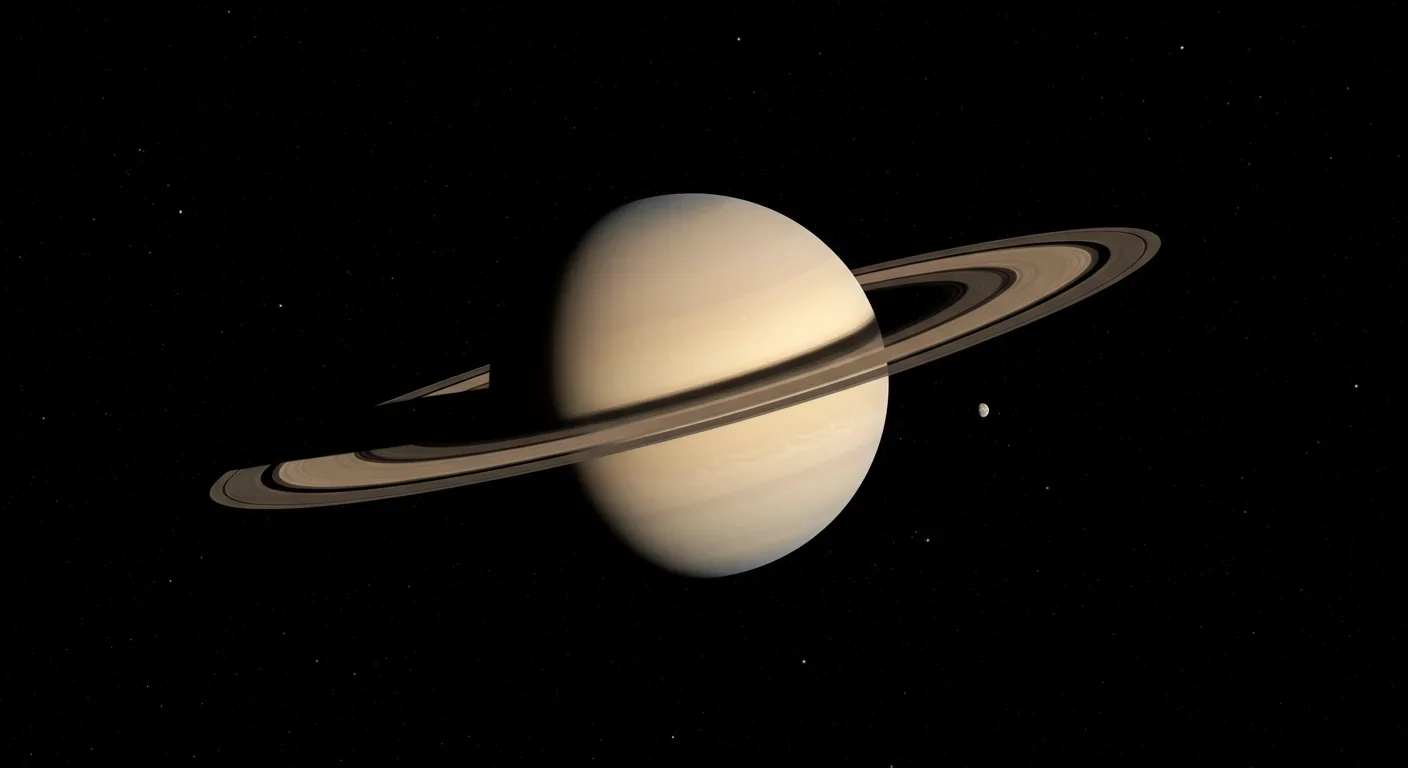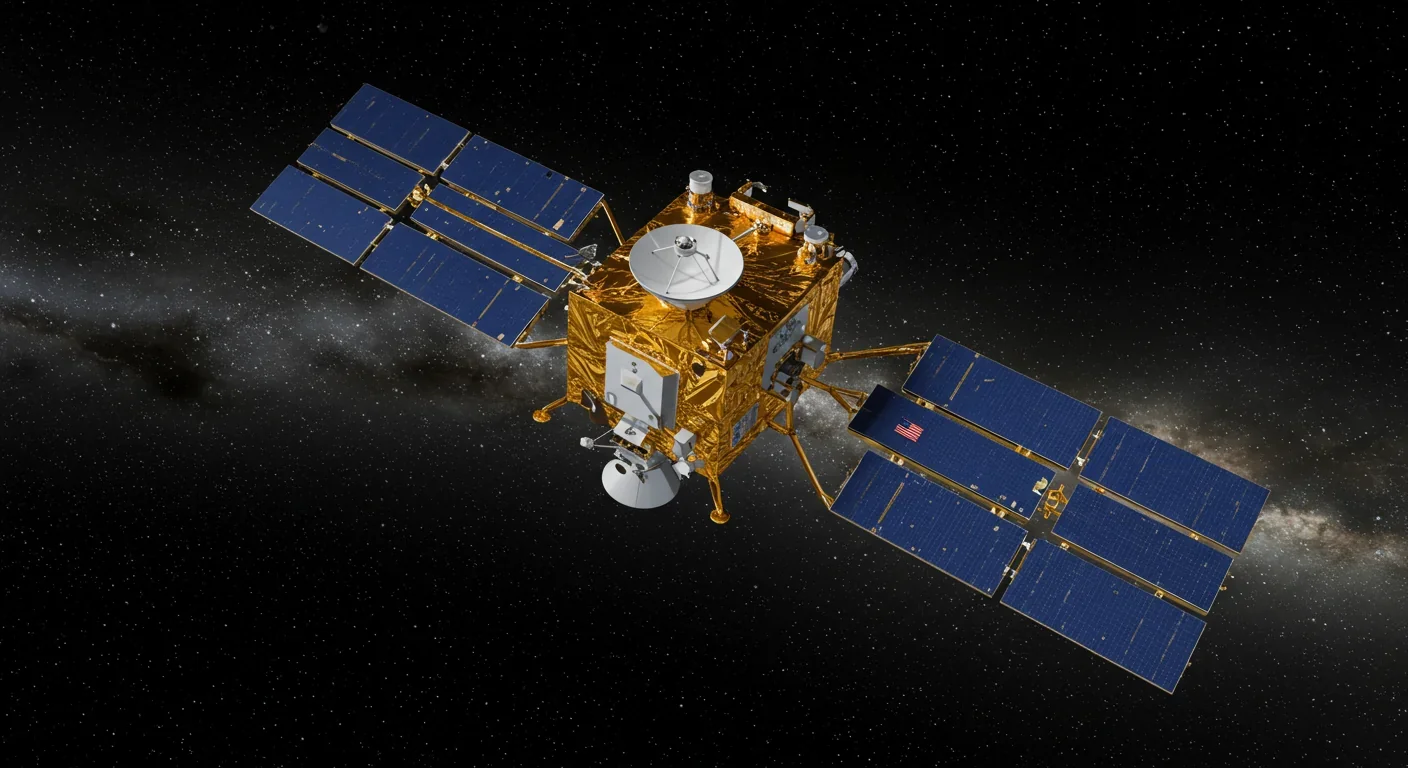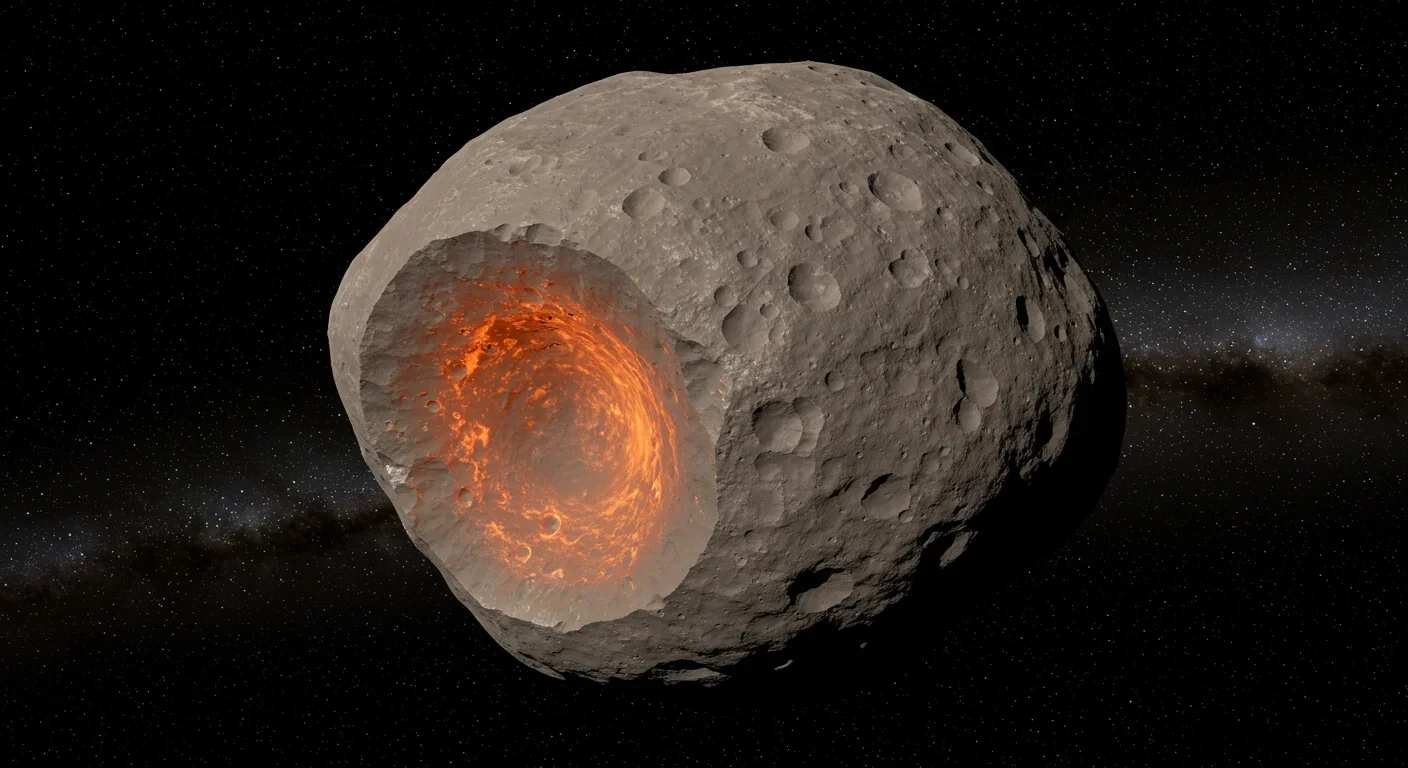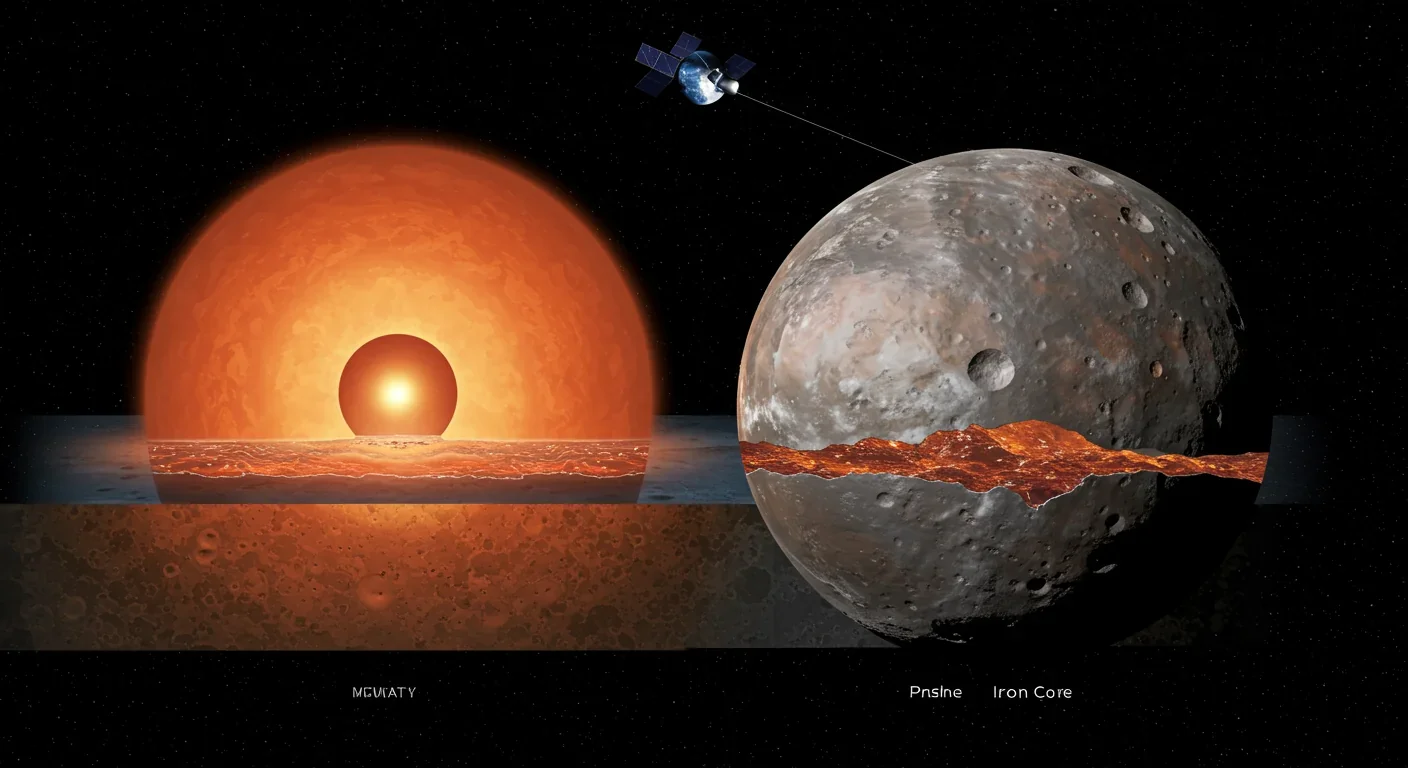Saturn's Rings: What Cassini Revealed About Their Fate

TL;DR: NASA's Psyche mission will study a metal-rich asteroid valued at $10 quintillion, but the real goal isn't mining—it's understanding planetary cores and how rocky worlds like Earth form.

By 2029, a NASA spacecraft will arrive at one of the most unusual objects in our solar system. Asteroid 16 Psyche has captured headlines with a jaw-dropping valuation: $10 quintillion, roughly 10,000 times the value of the entire global economy. But if you think this mission is about mining space gold, you're missing the real treasure. What scientists hope to find on this metal world could fundamentally reshape our understanding of how planets form and offer the first glimpse into something we can never directly observe: Earth's hidden iron core.
The hype around Psyche's supposed wealth tells us more about our economic fantasies than scientific reality. While the asteroid truly is composed primarily of iron and nickel, the notion that we'll be harvesting it anytime soon belongs firmly in science fiction. What's actually happening is far more fascinating—and more achievable.
Psyche isn't like other asteroids. While most space rocks are made of stone or ice, this one appears to be 30-60% metal by volume, mostly iron and nickel. It's roughly 173 miles across at its widest point, about the size of Massachusetts, and it orbits the Sun in the main asteroid belt between Mars and Jupiter.
The asteroid was discovered in 1852 by Italian astronomer Annibale de Gasparis, who named it after the Greek goddess of the soul. For over a century, it was just another dot in telescope observations. Then radar studies from Earth revealed something extraordinary: reflections consistent with a metallic surface.
Most asteroids we've studied are either rocky rubble piles or icy bodies left over from the solar system's formation. Metal-rich asteroids like Psyche are rare, making up less than 5% of known asteroids. Scientists believe Psyche may be the exposed iron core of a planetesimal—a planetary building block from the early solar system that was violently stripped of its rocky outer layers in ancient collisions.
If that hypothesis is correct, Psyche offers something unprecedented: a window into planetary interiors. On Earth, we can't drill more than a few miles into the crust before the heat and pressure become insurmountable. Our planet's iron core lies 1,800 miles beneath our feet, forever out of reach. Psyche might let us study a planetary core directly for the first time.
So where did that astronomical price tag come from?
The calculation is simple math applied to a complex problem. Psyche is believed to contain 1.7×10^19 kg of nickel-iron, which could theoretically supply world production requirements for several million years. Multiply that mass by commodity prices for iron, nickel, and trace platinum group metals, and you get a number with 19 zeros.
The problem? That valuation is economically meaningless.
First, flooding Earth's market with that much metal would instantly crash commodity prices to near zero. The entire valuation depends on scarcity—introduce unlimited supply and the value evaporates. It's like saying you're rich because you own all the sand on a beach, ignoring that sand is only valuable when it's rare or processed.
Second, the cost of getting that metal to Earth is prohibitively expensive with current technology. Launch costs have dropped from around $10,000 per pound fifteen years ago to a few thousand dollars today, with SpaceX's Starship potentially reducing costs to hundreds of dollars per pound in the future. But even at those reduced rates, the economics don't work.
Consider what asteroid mining would actually require: sending mining equipment to the asteroid, extracting ore in zero gravity, refining it in space (or hauling unprocessed ore back), and returning the refined metal to Earth. Each step multiplies the costs. A Reddit analysis comparing launch costs to platinum prices concluded that even for a large metallic asteroid, the material you could retrieve wouldn't be worth enough to buy more than a few cars.
A 2018 University of Paris-Saclay study did find one potential advantage: asteroid mining could produce 150 kg of CO₂ per kilogram of platinum extracted, compared to 40,000 kg for Earth-based mining. That's a massive environmental improvement, but it doesn't solve the economic problem.

Associate professor Ian Lange puts it bluntly: "Asteroid mining is a multi-decade project; even with advances, the prospect of mining metals in space and bringing them back to Earth is still far from commercially viable."
The Psyche spacecraft launched on October 13, 2023, aboard a SpaceX Falcon Heavy rocket. It won't arrive at its target until late July 2029, when Psyche's gravity will capture the spacecraft into orbit. The prime mission will run for approximately two years, ending in November 2031.
Unlike sample-return missions like OSIRIS-REx (which brought back 121.6 grams from asteroid Bennu) or Hayabusa2 (which returned 5.4 grams from Ryugu), Psyche won't land or retrieve any material. Instead, it will orbit at four different altitudes, getting progressively closer to map the surface in ever-greater detail.
The spacecraft carries three primary scientific instruments. A multispectral imager will photograph the surface in multiple wavelengths to identify different minerals. A gamma-ray and neutron spectrometer will detect the elements present by analyzing radiation from the asteroid's surface. And a magnetometer will search for evidence of an ancient magnetic field, which would confirm that Psyche was once part of a molten planetary core.
The mission's scientific objectives are to determine whether Psyche is truly an exposed core or unmelted primordial material; establish the relative ages of different surface regions; identify whether Psyche contains the same light elements expected in Earth's high-pressure core; determine if it formed under more oxidizing or reducing conditions than Earth's core; and characterize its topography in detail.
Principal investigator Lindy Elkins-Tanton from Arizona State University leads the mission, with NASA's Jet Propulsion Laboratory managing operations. The mission is part of NASA's Discovery Program, which focuses on high-science-return missions with constrained budgets.
There's also a technology demonstration aboard: the Deep Space Optical Communications (DSOC) experiment. This system has already achieved 2 Mbps data transmission at 2.7 AU—far exceeding its 1 Mbps design goal. If DSOC proves reliable over the full mission, laser communications could enable much higher data rates for future deep-space missions without requiring massive antenna upgrades.
Here's what makes this mission scientifically compelling: Earth's core is a mystery. We know it's there because of seismic waves and gravitational measurements, and we're fairly confident it's mostly iron with some nickel and lighter elements mixed in. But we've never seen it, touched it, or directly analyzed its composition.
The deepest hole ever drilled—Russia's Kola Superdeep Borehole—reached just 7.5 miles before extreme temperatures made further drilling impossible. Earth's outer core begins at 1,800 miles depth. The inner core sits at 3,200 miles down. We will never drill that deep.
Studying Psyche gives planetary scientists a direct look at what a metallic core might actually be like. If Psyche is indeed an exposed planetesimal core, its surface composition and structure can tell us about the conditions under which planetary cores form. Did Psyche's parent body have a magnetic field, and if so, what can that tell us about the magnetic dynamos that power planetary magnetism?
The asteroid's density of 3,400 to 4,100 kg/m³ is consistent with a metallic body, but that's a wide range. Precise mapping of Psyche's mass distribution will reveal whether the metal is uniformly distributed or concentrated in certain regions. If the composition varies significantly across the surface, that could indicate Psyche isn't a simple core fragment but rather a more complex body that experienced partial melting or impacts that mixed different materials together.
One key question is whether Psyche contains light elements like sulfur, oxygen, or carbon. Earth's core is less dense than pure iron-nickel, suggesting it contains about 5-10% lighter elements. But we don't know which elements or in what proportions. If Psyche shows evidence of similar light elements, it would support models of how these materials become incorporated during planetary formation.
So if Psyche isn't going to make anyone a trillionaire, what about asteroid mining more generally?
Companies are trying. AstroForge, a California startup, hopes to recover small quantities of metal—initially a few grams, eventually kilograms—from near-Earth asteroids a few meters to half a kilometer in diameter. Founder Matt Gialich has adopted the Silicon Valley mantra "move fast and break rocks," aiming for incremental progress rather than an immediate bonanza.
Investor Victor Vescovo, who backed AstroForge, notes that falling launch costs are changing the economics. If SpaceX's Starship achieves its goal of reducing launch costs to a few hundred dollars per pound, missions that were impossible become merely very difficult. Vescovo laughingly references Neil deGrasse Tyson's prediction that the world's first trillionaire will come from asteroid mining: "I do hope he's not wrong."

But hope and economic reality are different things. As of 2024, humanity has successfully returned approximately 127 grams of asteroid material to Earth from multiple missions. That's less than five ounces, retrieved at a cost of hundreds of millions of dollars per mission.
The challenges are enormous. Extracting usable material in microgravity is completely different from terrestrial mining. There's no atmosphere, extreme temperature swings, and no infrastructure. You can't just dig a pit or set up a smelter the way you would on Earth. Processing and refining ore in zero gravity remains an unsolved engineering problem.
Then there's the question of what to mine. The platinum group metals often cited in asteroid mining pitches are valuable specifically because they're rare on Earth. Flooding the market would tank prices. Iron and nickel are abundant here, so there's no economic reason to import them from space unless you're using them in space—for building space stations, lunar bases, or Mars habitats.
That's the likeliest near-term application: in-space resource utilization. If we establish permanent human presence beyond Earth, hauling building materials from Earth's gravity well will be prohibitively expensive. Extracting metals from nearby asteroids and using them in orbit makes far more economic sense than launching equivalent mass from Earth's surface.
Legal frameworks remain murky. The 1967 Outer Space Treaty prevents nations from claiming celestial bodies, but it doesn't clearly address whether private companies can extract and sell resources. The U.S. passed the Space Act of 2015, which grants American companies rights to asteroid resources they extract, but international law hasn't caught up. Without clear property rights, investors face regulatory uncertainty that compounds the technical and economic risks.
The Psyche mission represents a shift in how we approach space exploration. Rather than chasing speculative wealth, NASA is methodically building our understanding of the solar system's fundamental building blocks. The same approach guides missions to icy moons like Europa and Enceladus, where the science prize is understanding habitability, not extracting water.
This mission will produce results that ripple through planetary science. Understanding how metallic cores form and evolve affects our models of every rocky planet, including Earth. If we can determine what processes stripped Psyche's rocky exterior, we gain insight into the violent collisions that shaped the early solar system.
The spacecraft uses Hall-effect thrusters—a form of solar electric propulsion that consumes less than 10% of the propellant a chemical rocket would need for the same trajectory. With its solar arrays deployed, the spacecraft is nearly the size of a tennis court, capturing sunlight to power its ion drive for years of continuous, gentle acceleration. This technology opens the outer solar system to missions that would be impossible with conventional rockets.
When an unexpected xenon pressure drop occurred in April 2025, the mission team switched to backup fuel lines and resumed full operations within days—demonstrating the kind of redundancy and resilience that long-duration missions require.
By the time Psyche enters orbit in 2029, it will have traveled approximately 2.2 billion miles following a complex gravity-assist trajectory past Mars. Over the subsequent two years, its instruments will map the asteroid at resolutions down to tens of meters, revealing surface features that are invisible from Earth. We'll see craters, ridges, and composition variations that hold clues to Psyche's history.
The mission may also settle a long-standing debate about whether Psyche is truly a core remnant or something else entirely—perhaps a primordial body that formed metal-rich from the start, or a fragment of a partially differentiated world that never fully separated into core and mantle. Each possibility carries different implications for how planets grow from cosmic dust.
The $10 quintillion valuation makes for great headlines, but it obscures the genuine value of the Psyche mission. What's actually at stake is knowledge—insight into processes that occur nowhere else in the solar system, buried too deep to observe directly on any terrestrial world.
When the first high-resolution images come down from Psyche in 2029, we'll see a surface unlike anything previously visited. Metal-rich terrain may exhibit weathering patterns completely different from rocky or icy bodies. If Psyche has craters, their shapes and distributions will reveal the asteroid's mechanical properties. If it shows evidence of ancient volcanism—metal lava flows from a molten core—that would be extraordinary.
The mission's greatest contribution may be the questions it raises. Good science doesn't just answer questions; it reveals new ones we didn't know to ask. That's how knowledge advances—not through grand pronouncements of wealth, but through patient observation of strange worlds and the careful work of figuring out what they mean.
As the Psyche spacecraft speeds through the darkness between worlds, it carries no mining equipment, no drills, no prospectors. It carries cameras, spectrometers, and magnetometers. It carries humanity's curiosity about the universe and our desire to understand our place within it.
That's worth more than all the iron and nickel in the asteroid belt.

Saturn's iconic rings are temporary, likely formed within the past 100 million years and will vanish in 100-300 million years. NASA's Cassini mission revealed their hidden complexity, ongoing dynamics, and the mysteries that still puzzle scientists.

Scientists are revolutionizing gut health by identifying 'keystone' bacteria—crucial microbes that hold entire microbial ecosystems together. By engineering and reintroducing these missing bacterial linchpins, researchers can transform dysfunctional microbiomes into healthy ones, opening new treatments for diseases from IBS to depression.

Marine permaculture—cultivating kelp forests using wave-powered pumps and floating platforms—could sequester carbon 20 times faster than terrestrial forests while creating millions of jobs, feeding coastal communities, and restoring ocean ecosystems. Despite kelp's $500 billion in annual ecosystem services, fewer than 2% of global kelp forests have high-level protection, and over half have vanished in 50 years. Real-world projects in Japan, Chile, the U.S., and Europe demonstrate economic via...

Our attraction to impractical partners stems from evolutionary signals, attachment patterns formed in childhood, and modern status pressures. Understanding these forces helps us make conscious choices aligned with long-term happiness rather than hardwired instincts.

Crows and other corvids bring gifts to humans who feed them, revealing sophisticated social intelligence comparable to primates. This reciprocal exchange behavior demonstrates theory of mind, facial recognition, and long-term memory.

Cryptocurrency has become a revolutionary tool empowering dissidents in authoritarian states to bypass financial surveillance and asset freezes, while simultaneously enabling sanctioned regimes to evade international pressure through parallel financial systems.

Blockchain-based social networks like Bluesky, Mastodon, and Lens Protocol are growing rapidly, offering user data ownership and censorship resistance. While they won't immediately replace Facebook or Twitter, their 51% annual growth rate and new economic models could force Big Tech to fundamentally change how social media works.